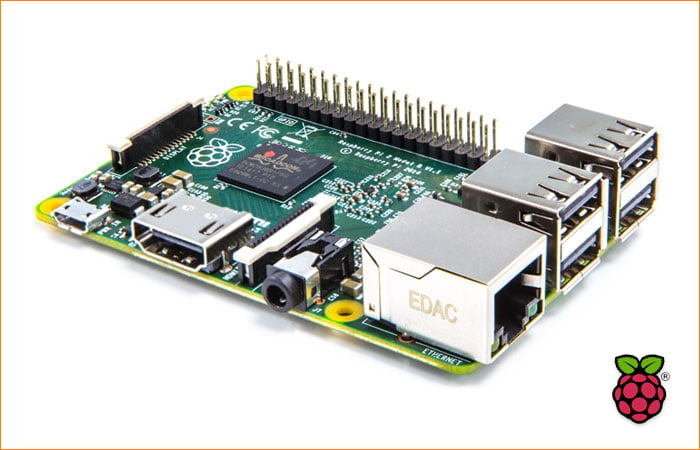
Raspberry Pi and StayLinked
It’s likely that many of you are familiar with Raspberry Pi, the single-board computer from the UK that measures roughly the size of a credit card and sells for less than US $40. Though designed for use primarily in education and meant for distribution in developing countries, the tiny computer has grown in popularity over the past couple of years and has sold in the millions of units worldwide. Here at StayLinked Headquarters in Tustin, California, we thought it might be interesting to see how well the StayLinked Server not only installed on such modest hardware, but how efficiently the software performed, and whether or not it could scale to handle hundreds‒‒or even thousands‒‒of concurrent terminal emulation sessions.
Installation and Execution
One of the more curious minds at StayLinked, Technical Support Engineer, Tom Brewsaugh, initially decided to install the StayLinked Server on the Raspberry Pi device using the standard Staylinked Server executable. “I wasn’t at all clear how well the server would perform since we normally go into enterprise environments and deal with computing power that far exceeds what the Raspberry Pi is capable of,” he said. “So even the viability was an unknown.”
When the process was launched, the server ran immediately. “The server response time was just as quick, and the installation went just as smoothly as it does with the more robust hardware of our enterprise machines. So that was incredibly cool.” Tom installed the software on the latest Raspberry Pi 2, Model B with 1GB of SDRAM operating at 900MHz on a Broadcom BCM2836 Arm7 Quad Core Processor. The entire install and configuration from start to finish it took less than 15 minutes.
StayLinked CTO Justin Griffith explains: “The Raspberry Pi load test was about testing our most resource-intensive software configuration on the lowest-end commercially available hardware we could get our hands on. What we've found quite honestly surprised many of us. We were able to connect and modernize thousands of sessions with SmartTE and capture productivity metrics for each individual user withStayLinked iQ, all while using less resources than you might find in your smartphone."
System Performance
Once the installation process was complete, Tom decided to run benchmark testing to see how efficiently the server performed with the StayLinked database using 4 different multi-licensed applications on a simulated IBM AS/400-iSeries mainframe. The results were similar to what you might expect on typical hardware. “The meaningful part of all this,” says Justin, “was the realization that if the performance numbers are similar to those of more expensive hardware, then we really aren’t having any measurable impact on CPU performance. We simply aren’t overusing resources. If your hardware is running slow, it’s probably not us.” Our years of host computer experience has taught us how to take advantage of the power and resources of servers without overburdening the system.
Scaling
To determine just how well the system would perform with multiple connections, Tom hooked up a StayLinked simulation environment that allowed the system to try to most multiple concurrent connections. “I started out with 10, then 20, then 50, then 100,” he said. “Each time I increased the load it was as smooth as the last.” By the end of the simulation, Tom had successfully just over 1,000 concurrent connections running a variety of multi-session application instances. “We didn’t test for every single variable known to man, but we were able to see what StayLinked can do on the Raspberry Pi,” he said. “That little device is incredible, and it painted a pretty clear picture of what the StayLinked server is capable of as well. I wouldn’t necessarily condone running an enterprise on a $40 computer board that fits in your shirt pocket, but I’m not going to scoff at anyone that does either.”
All told, the entire experiment last just under 3 hours and was repeated the next day using the same methodology. The results on that next day were identical. The StayLinked server installed, performed, and scaled with exceptional results.
Research and Development
At StayLinked, one of the cornerstones of making progress in the supply chain is extracurricular experimentation. "At StayLinked we're always trying to push the boundaries of what's possible with our solutions,” says Justin. “Whether it's modernization of the TE interface with our SmartTE or our unique ability to deliver on the promise of Business Intelligence and analytics with StayLinked iQ, we've found many of our most successful features and insights by experimenting in our downtime.
Conclusion
StayLinked has been dedicated to making host-based data collection application run as efficiently, reliably, and securely as possible. The fact that we can easily run over 1000 connections of not just terminal emulation, but graphically enhanced terminal emulation with real-time analytics is a great illustration of our system's design.
Now, it may not be the best decision to run your enterprise data collection applications on Raspberry Pi, but we think it is pretty cool that you could!
About StayLinked
For over 20 years StayLinked has been delivering world-class solutions for mission-critical, host-based systems in the warehousing, manufacturing, transportation, and retail industries. It was our deep understanding of these host-based systems that led our team of technology experts to introduce a new paradigm in terminal emulation and session management for mobile devices.


